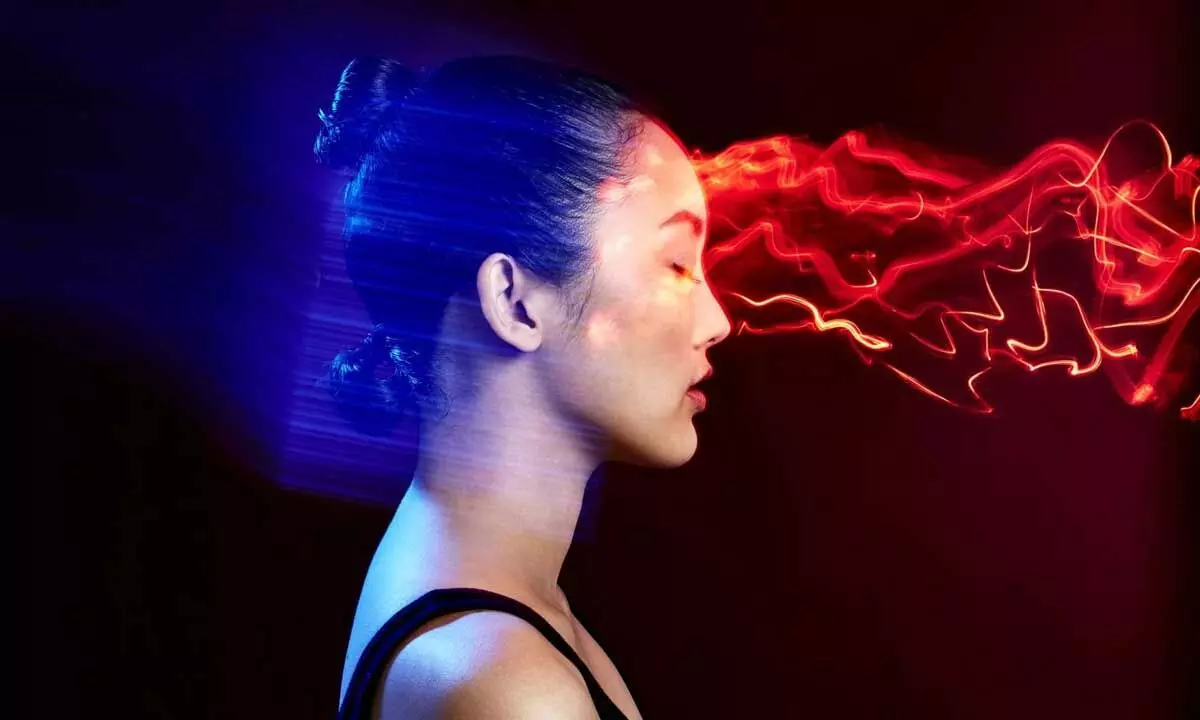Live
- Complete retaining wall works on war footing: Ministers
- Singham Again Now Streaming on This Platform: Check Details Here
- ACB records statement of complainant in Formula-E race case
- Chandrababu pays tribute to Atal Bihari Vajpayee on 100th anniversary
- Political equations in TN likely to shift after PMK's offer to DMK
- Bellary dist records 23 maternal deaths in 8 months
- Christmas in the air: Rome of the East at its festive best
- Garena Free Fire Max Redeem Codes & Exclusive Rewards – December 25, 2024
- Belagavi glows celebrating centenary of historic Congress session
- Tigress ‘Rani’ at Pilikula zoo delivers two cubs
Just In
Being aware of drop attacks or atonic seizures


Being aware of drop attacks or atonic seizures
Drop attacks are very common in children and elderly age group causing recurrent falls and injuries. It has many implications in diagnosis and treatment of etiology. Often missed in diagnosis and labelled as functional neurological disorder.
Drop attacks are very common in children and elderly age group causing recurrent falls and injuries. It has many implications in diagnosis and treatment of etiology. Often missed in diagnosis and labelled as functional neurological disorder.
The drop attacks can be defined as sudden falls without or with apparent loss of consciousness, due to collapse of postural muscle tone or to abnormal muscle contractions in the legs. Symptomatic drop attacks have many neurologic and non-neurologic causes. About two-thirds of cases are of unknown etiology.
Drop attacks in children are usually of epileptic in origin most common being Atonic and myoclonic seizures. Epileptic drop attacks, are a heterogeneous group of epileptic seizures in which the fall represents the main or only feature in the absence of any major motor phenomena. Falling seizures may be caused by a variety of seizure types (either generalized or partial) and mechanisms, including massive myoclonus, tonic contraction, pure atonic events, or the combinations of motor phenomena, as in the case of myoclonic-astatic atonic seizures.
Idiopathic drop attacks usually appear between the ages of 40 and 59 years, the prevalence increasing with advancing age and are a common cause of falls and fractures in elderly people. Neurologic disorders include leg weakness, sudden falls in parkinsonian syndromes including those due to freezing, transient ischemic attacks, startle reactions (hyperekplexia), paroxysmal dyskinesias, structural central nervous system lesions and hydrocephalus. In some of these, there is loss of muscle tone in the legs, in others there is excessive muscle stiffness with immobility, such as in hyperekplexia.
Cataplexy is another cause of symptomatic drop attacks that does not fit the categories listed previously. Patients with cataplexy fall suddenly without loss of consciousness but with inability to speak during an attack.There is a precipitating trigger, usually laughter or a sudden emotional stimulus. The patient's muscle tone is flaccid and remains this way for many seconds.
Cataplexy is usually just one feature of the narcolepsy syndrome; other features include sleep paralysis and hypnagogic hallucinations, in addition to the characteristic feature of sudden, uncontrollable falling asleep. Syncope and cardiovascular disease account for non-neurologic causes. They are usually explained by a transient bilateral disorder involving structures of the central nervous system responsible for postural tonus and balance.
Atonic seizures are currently defined as epileptic attacks characterized by a sudden loss or diminution of muscle tone, which may be fragmentary, confined to a segment (limb, jaw, head), or massive, leading to a slumping to the ground. They are currently diagnosed only by means of polygraphic recording, which should demonstrate the interruption of EMG discharges associated with an EEG correlate. They constitute 1-3% of epilepsies.
They occur in all age groups but more common in children. More commonly they are associated with other types of seizures like absence and tonic-clonic seizures in Lennaux-gastaut syndrome.The possible signs of atonic seizure is Sudden loss of muscle tone, Child goes limp and fall to the ground, Eyelids droop, head nods and jerking. Child conscious or brief loss of consciousness, In babies who cant stand only head drop can be often complaint. Usually lasts 15 seconds not beyond 3minutes and Diagnosis is usually by EEG showing 1-2Hz rhythmic or irregular spike and wave activity. Other tests are MRI brain and PET scan.
Atonic seizures are usually part of generalized epilepsies, however ictal atonia is increasingly recognized as a phenomenon of focal seizures. Atonia recognition in focal seizures is crucial in order to not mislabel these events as non-epileptic. In addition, a large number of patients, who undergo presurgical investigations due to focal pharmacoresistant epilepsy, may present with atonia.
Treatment with valproate in conjunction with lamotrigine is the treatment of choice. First line drugs like carbamazepine and phenytoin are not effective. For patients with Atonic seizures in particular, surgical treatment corpus callosotomy is a disconnection surgery that will prevent the spread and generalization of a seizure.
The author is Consultant Neurologist, BGS Gleneagles Global Hospital, Bengaluru.

© 2024 Hyderabad Media House Limited/The Hans India. All rights reserved. Powered by hocalwire.com






